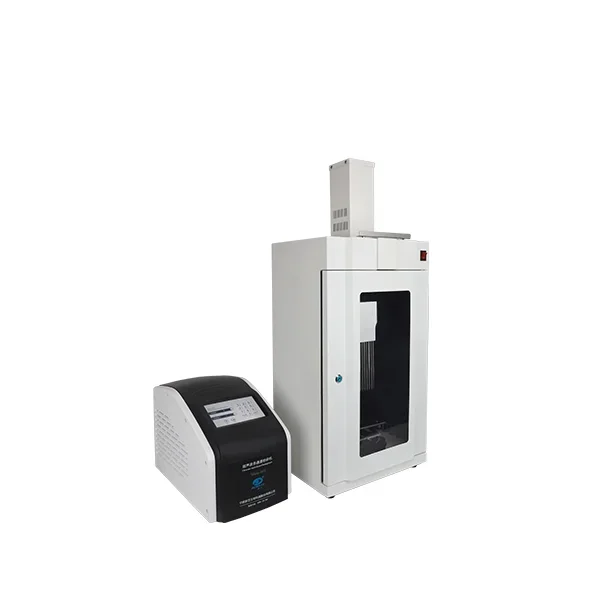- This topic is empty.
-
AuthorPosts
-
2025-10-09 at 3:09 pm #7908
In modern laboratories, ultrasonic generators have become essential tools in fields such as life sciences, materials science, and environmental engineering. Whether for cell disruption, emulsification, dispersion, sample extraction, or accelerating chemical reactions, ultrasonic generators are widely used due to their high efficiency, controllability, and flexibility. However, many researchers often overlook a key aspect during their use: matching the probe selection with the sample volume. Choosing the right probe not only impacts experimental efficiency but also the accuracy and reproducibility of experimental results. This article will systematically explain the principles for selecting ultrasonic generator probes and provide appropriate solutions for samples of varying volumes.
1. Why is probe selection crucial for ultrasonic experiments?
Ultrasonic generators convert electrical energy into high-frequency mechanical vibrations through a transducer. This energy is transferred to the liquid medium through a probe (also known as an horn or ultrasonic probe), generating cavitation. This effect instantly releases high energy, enabling cell disruption, dispersion, or molecular-level emulsification reactions.
The probe's diameter, length, and resonant frequency directly determine the distribution and intensity of the ultrasonic energy. Improper probe selection can lead to the following problems:
Too high energy causes sample overheating, degradation, or side reactions.
Too low energy-inability to effectively disrupt cells or achieve uniform dispersion.
Probe diameter mismatch with container leads to uneven sound wave propagation and poor experimental reproducibility.
Therefore, scientific and rational probe selection is crucial for successful experiments.

2. Basic Types of Ultrasonic Generator Probes
Common laboratory ultrasonic probes are primarily categorized by diameter:
Microprobes (2-3mm diameter)
Applicable volume: 0.2ml-5ml
Applications: Small sample volumes such as PCR tubes and Eppendorf tubes, commonly used for RNA/DNA extraction and protein lysis in molecular biology.
Miniprobes (6-8mm diameter)
Applicable volume: 5ml-50ml
Applications: Commonly used for medium-volume cell suspensions, emulsion reactions, or nanoparticle dispersion. Medium Probe (10-12mm Diameter)
Applicable Volume: 50ml-250ml
Applications: Cell culture disruption, drug dispersion experiments, and nanoparticle processing in materials science.
Large Probe (15-20mm Diameter and Above)
Applicable Volume: 250ml-1000ml and larger
Applications: Large-Scale Sample Preparation, Pre-Industrialization Experiments, and Environmental Sample Processing (e.g., soil suspensions and wastewater testing samples).
In Summary, Larger probe diameters accommodate larger sample volumes; smaller probe diameters provide more concentrated energy density and are more suitable for micro-volume experiments.
3. Analysis of Processing Solutions for Different Sample Volumes
3.1 Micro-Samples (0.2ml-5ml)
This type of experiment is commonly found in molecular biology or medical research, such as small volumes of cell lysates or nucleic acid extraction samples. Recommended probe: 2-3mm microprobe
Operational tips:
Short pulse sonication is recommended to avoid overheating;
An ice bath is required to lower the temperature to preserve protein or nucleic acid activity;
Sonication time should be kept to a minimum to avoid molecular damage.
3.2 Small Volume Samples (5ml-50ml)
Suitable for routine experiments with medium-volume cell suspensions or small-scale emulsification experiments.
Recommended probe: 6-8mm miniature probe
Operational tips:
Use continuous or intermittent sonication mode, adjusting according to sample sensitivity;
Pay attention to the liquid level; the probe should be immersed 1-2cm below the liquid surface to ensure uniform energy transfer;
If the experimental liquid has high viscosity, it is recommended to process the sample in sections.
3.3 Medium Volume Samples (50ml-250ml)
Commonly used for large-scale cell culture disruption or medium-volume nanodispersion experiments. Recommended probe: 10-12mm medium-sized probe
Operational tips:
Batch processing is recommended to avoid overheating of the sample due to prolonged single sonication.
If the goal is to prepare nanoemulsions or nanoparticle dispersions, a stirring or cooling system should be used.
The container diameter should not be too large to prevent rapid attenuation of the sound wave.
3.4 Large Sample Volumes (250ml-1000ml+)
Suitable for environmental engineering or industrial scale-up experiments, such as wastewater sample treatment, large-scale emulsification, or extraction.
Recommended probe: Large probes (15-20mm or larger).
Operational tips:
A cooling system or circulating ice water is essential to prevent rapid temperature rise in large sample volumes.
AuthorPostsViewing 1 post (of 1 total)- You must be logged in to reply to this topic.